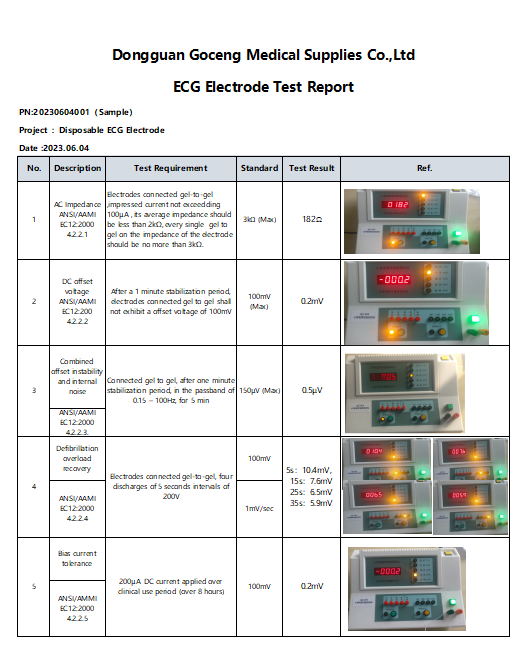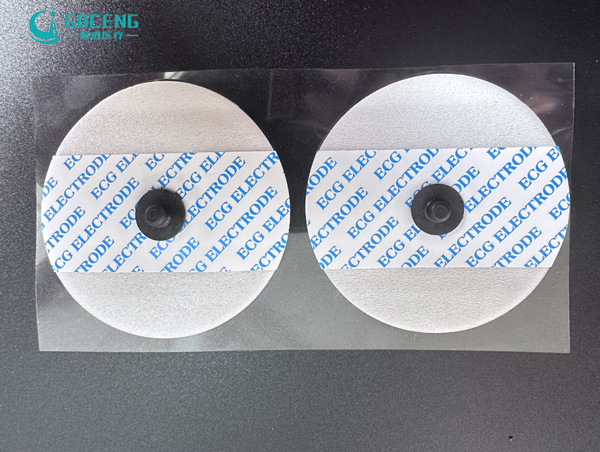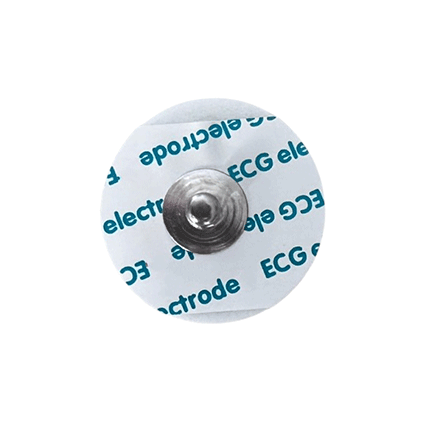Standard for ECG electrode testing
ANSI/AAMI EC12 is commonly used internationally: 2000(R2005) Disposable ECG electrodes, the Chinese pharmaceutical industry standard "disposable ECG electrodes YY/T 0196-2005", IEC is preparing to release a new ECG monitoring standard, which will focus on the relevant test requirements for ECG electrodes.
Ecg electrode test method:
We use DM9500 machine to connect the one-time ECG electrode (can be carried out in multiple channels at the same time), and the machine directly and completely automatic test to complete the project: Ac impedance (ACZ), DC Offset voltage (DCO), internal NOISE (NOISE), BIAS current tolerance (SDR), defibrillation overload Recovery (BIAS), directly generate PDF reports.
1. Ac impedance (ACZ) : the human skin impedance from a few hundred ohms to hundreds of thousands of ohms, theoretically the lower the electrode impedance, the better, the higher the impedance, the easier it is to cause the impedance imbalance between the electrodes, so it will reduce the common mode rejection ratio (CMRR) of the ECG amplifier, resulting in increased AC interference of the ECG tracing line. Ecg monitors generally have protective devices to absorb the overload voltage after defibrillation, current limiting resistance to absorb the current generated by overload and excess energy, electrode resistance is an important part of the current limiting resistance, in the skin and electrode contact surface may produce a lot of heat, will increase the harm to patients and the possibility of electrode failure. So the standard sets limits.
2. Dc offset voltage (DCO) : The ECG monitor will cause saturation distortion under the influence of too high DC offset voltage, so there is a certain reasonable limit for the offset voltage of the electrode pair. The offset voltage of the electrode pair should have a certain margin to meet the imbalance potential, defibrillation overload, pacemaker current or ECG monitor bias current caused by the contact surface between the skin and the electrode.
3. Internal NOISE: The internal noise and the requirements of out-of-balance instability are the strengthening of the out-of-balance voltage requirements, and the instantaneous change of the out-of-balance voltage may exceed the specified limit value, so there are certain requirements for it.
4. Bias current tolerance (SDR) : The reactants of the chemical reaction necessary for the ECG electrode to transmit current at the electrode/electrolyte junction can be depleted, resulting in a significant change in the potential of the half battery when the DC bias current is applied. Therefore, it is necessary to verify whether the ECG electrode is compatible with the 200nA DC bias current allowed by the ECG monitor.
5. Defibrillation overload recovery (BIAS) : For the defibrillation overload recovery performance of ECG electrodes, unqualified electrodes may cause patient death. It is important for clinicians to use the ECG signal to determine whether the heart has returned to normal sinus rhythm after a defibrillation attempt on a patient. The rapid recovery of the electrodes from the defibrillation pulse allows the clinician to quickly evaluate the effect of anti-shock, so minimal change in baseline after defibrillation is an essential requirement. That is to say, after a defibrillation attempt, if the patient has returned to normal sinus rhythm, but because the electrode is not qualified, the clinician cannot see the real ECG, it is possible to carry out the wrong follow-up rescue method, continue the defibrillation attempt, which may lead to the death of the patient.

Goceng medical ecg electrode testreport for your reference .


